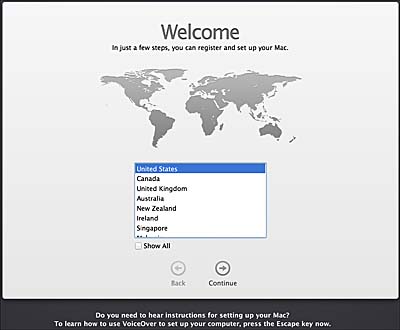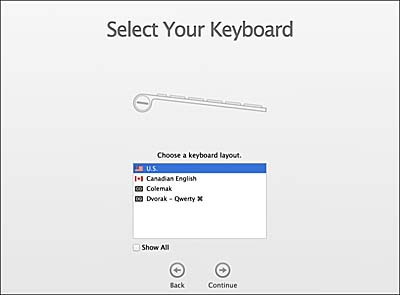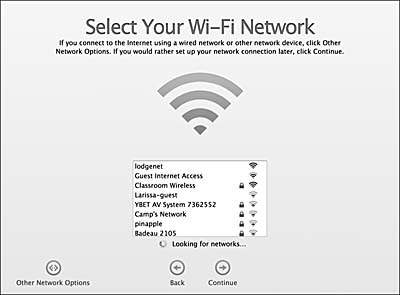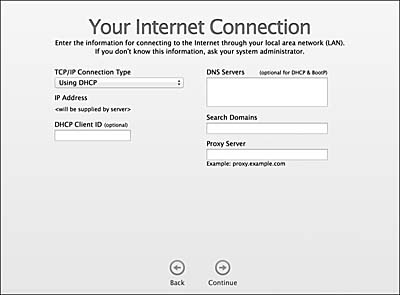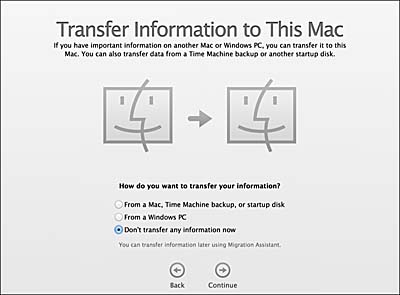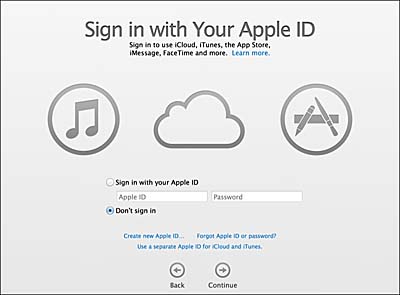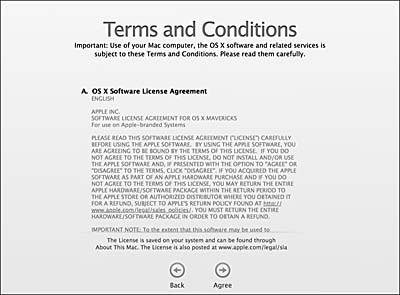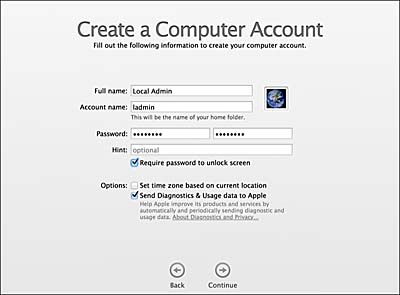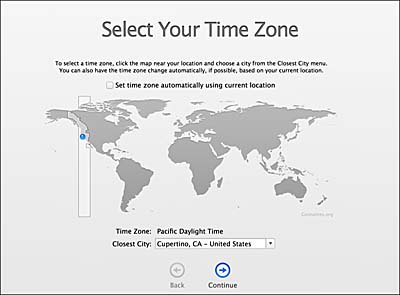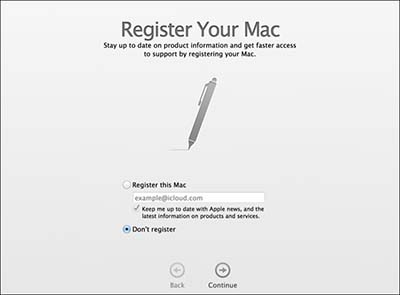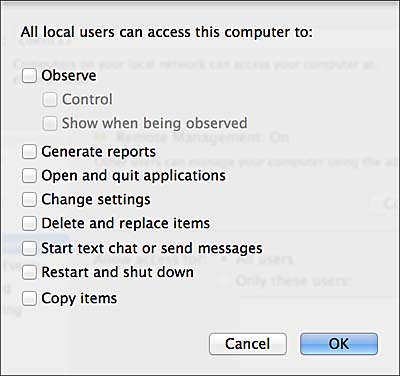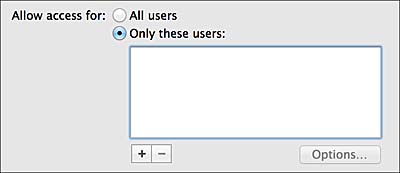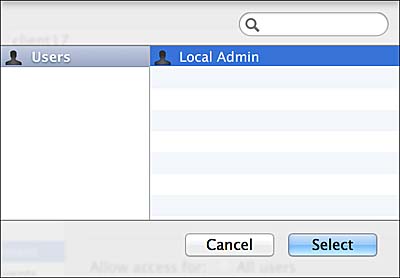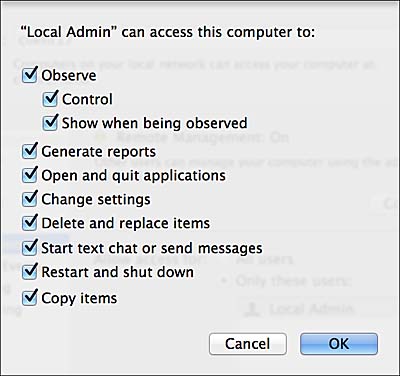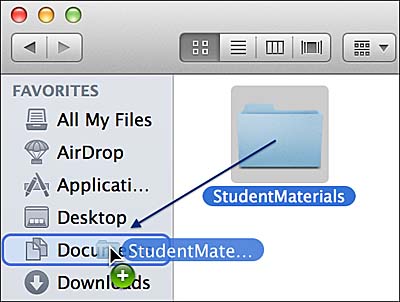- Reference 2.1 Understanding Apple’s Goals
- Reference 2.2 Device Management and Supervision
- Reference 2.3 Apple ID Considerations
- Reference 2.4 iCloud in Managed Environments
- Reference 2.5 Apple Deployment Programs
- Reference 2.6 Deployment Scenarios
- Exercise 2.1 Configure Your Client Mac
- Exercise 2.2 Create Apple IDs
- Exercise 2.3 Verify Administrator Apple ID Access
- Exercise 2.4 Configure Your iOS Device
Exercise 2.1 Configure Your Client Mac
In this exercise, you will configure your client Mac in preparation to remotely manage your server and to be managed by your server’s Profile Manager service.
To match your experience with the exercise instructions, you’ll use one of two options to configure a local administrator account, depending on whether you are performing these exercises independently or are in an instructor-led environment.
In both situations, you’ll use Sharing preferences and apply any necessary system software updates.
Challenge
Set up your client computer with a unique computer name. Download student materials.
Considerations
The exercises in this guide are written so that the individual reader and the student in the instructor-led environment have similar experiences.
Solution
Establish Your Student Number
In this exercise you will use a student number to provide unique names and addresses for your computers.
- If you are in an instructor-led environment, obtain your student number from the instructor.
If you are performing these exercises independently, you can use any number from 1 to 17. Because the following steps use student number 17 in its examples, you might consider choosing 17 as your student number.
If your client computer has not yet been set up, and is at the Welcome pane, perform the steps in the Option 1 section. Otherwise, skip to Option 2, “Configure an Existing OS X System for Your Client computer.”
Option 1: Configure OS X on Your Client Computer Using Setup Assistant
As previously noted these steps are necessary only if your client computer has not already been set up, which is the situation in an instructor-led environment.
Ensure that you have Mavericks installed on your client computer. If it isn’t already installed, install it now using the Mac App Store, the Recovery HD, or a method specified by your instructor; and then continue when you reach the Welcome pane.
In this section, you’ll step through the OS X Setup Assistant for initial system configuration of your client computer.
- Ensure that your client computer is connected to a valid network.
- If necessary, turn on your client computer.
- In the Welcome pane, select the appropriate region, and click Continue.
- Select the appropriate keyboard layout, and click Continue.
- If you see the Select Your Wi-Fi Network pane, click Other Network Options.
- Your Mac does not have a built-in Ethernet port (but does have a Thunderbolt to Gigabit Ethernet adapter).
- Your Mac is connected via Ethernet to a network that does not offer DHCP service.
- Your Mac is connected via Ethernet to a network that offers DHCP service, but the network is not connected to the Internet.
- Your Mac is not connected to a network via Ethernet.
- If you are at the “How Do You Connect?” pane, select “Local network (Ethernet)”, and click Continue.
- If you are at the Your Internet Connection pane, leave the settings at their defaults, and click Continue.
- In the “Transfer Information to This Mac” pane, select “Don’t transfer any information now” and click Continue.
- In the “Sign in with Your Apple ID” pane, select “Don’t sign in.” Click Continue, and then click Skip to confirm that you want to skip signing in with an Apple ID. If you do enter an Apple ID, some of the following figures may look slightly different from your results, and you may need to perform extra steps.
- At the “Terms and Conditions” pane, read the terms and conditions, and then click Agree.
- In the “Terms and Conditions” dialog, confirm that you have read and agree to the OS X Software License Agreement by clicking Agree.
The Setup Assistant will evaluate your network environment and try to determine if you are connected to the Internet. This can take a few moments.
The Select Your Wi-Fi Network pane will appear under any of the following circumstances:
Create Your Local Administrator Account
Creating the administrator account as specified in the following steps is essential. If you do not, future exercises may not work as written. Highlighted text is used throughout this guide to identify text you should enter exactly as shown.
- In the Create Your Computer Account pane, enter the following information:
- Full Name: Local Admin
- Account Name: ladmin
- Password: ladminpw
- (verify field): ladminpw
- Hint: Leave blank.
- Leave the checkbox “Require password to unlock screen” selected.
- Deselect the checkbox “Set time zone based on current location.”
- Leave the checkbox “Send Diagnostics & Usage data to Apple” selected.
- Click Continue to create the local administrator account.
- If you see the Select Your Time Zone pane, click your time zone in the map; or choose the nearest location in the Closest City pop-up menu, and then click Continue.
- At the Register Your Mac pane, select “Don’t register,” and then click Continue. You won’t be entering registration information at this time.
- When asked if you are sure you don’t want to register, click Skip.
- If you are prompted to install software updates, click Not Now.
If you entered your Apple ID, you can select or deselect the “Allow my Apple ID to reset this user’s password” checkbox because it does not have a major effect on the exercises.
Now skip the Option 2 section, and continue with the “Set the Computer Name and Turn On Remote Management” section.
Option 2: Configure an Existing OS X System for Your Client Computer
This option is designed only for those who are performing the exercises independently and who have a computer that is already set up with an existing administrator account.
Create a New Administrator Account in System Preferences
- If necessary, log in with your existing administrator account.
- From the Apple menu, choose System Preferences.
- In System Preferences, click Users & Groups.
- In the lower-left corner, click the lock icon.
- In the dialog that appears, enter the password for your existing administrator account, and click Unlock.
- Under the user list, click the Add (+) button.
- In the dialog that appears, enter the following information:
- New Account: choose Administrator
- Full Name: Local Admin
- Account Name: ladmin
- Click Create User.
- At the bottom of the user list, click Login Options.
- If an account is selected for Automatic Login, in the pop-up menu, choose Off.
- Close System Preferences and log out.
- At the login screen, select the Local Admin account and enter its password (ladminpw, or whatever you specified earlier).
- Press Return to log in.
If you are performing the exercises in an instructor-led environment, enter ladminpw in the Password and Verify fields.
If you are performing the exercises independently, you can select a more secure password for the Local Admin account. Be sure to remember the password you have chosen, as you will need to reenter it periodically as you use this computer.
You may provide a password hint if you want to.
If you entered your Apple ID, you can select or deselect the “Allow my Apple ID to reset this user’s password” checkbox because it does not have a major effect on the exercises.
This concludes Option 2; everyone should continue with the following section.
Set the Computer Name and Turn On Remote Management
You will specify a computer name associated with your student number. If you are performing the exercises independently, you can choose to skip this section.
You will also enable Remote Management, which will allow the instructor to observe your computer, control your keyboard and mouse, gather information, copy items to your computer, and otherwise help you if necessary.
- In the Dock, open System Preferences.
- Open Sharing.
- Set the Computer Name to clientn, replacing n with your student number.
- Press Return.
- Select the Remote Management checkbox.
- In the dialog that appears, leave all the checkboxes deselected, and click OK for now, as this controls access for all local users, and you will configure access for one user only next.
- Select “Allow Access for: Only these users.”
- Click the Add (+) button, select Local Admin, and click Select.
- In the dialog that appears, Option-click the Observe checkbox to automatically select all the checkboxes.
- Click OK.
- Click Show All to return to the System Preferences pane.
- Press Command-Q to quit System Preferences.
For example, if your student number is 17, the computer name should be client17, all lowercase and no spaces. If you are working through the exercises on your own, you may select your “student number.” (Remember that 17 is used in the examples throughout the book.)
Notice that the name listed in the Computer Name field—which is the local hostname—updates to match your new computer name.
Now enable yourself and your instructor to remotely manage your client computer; this also allows you to use Screen Sharing from another Mac.
Update Software
To take advantage of possible fixes and improvements, be sure that you’re running the most recent versions of OS X and iTunes. Run Software Update. If a local Caching service is available, your Mac will automatically use it.
- From the Apple menu, choose Software Update.
- Next to available updates for OS X and iTunes, if any, click Update.
You do not need updated versions of other software in order to use the exercises in this guide, but you are free to update any items you wish to update.
Download Student Materials
Some files are necessary for the completion of some of these exercises. In some instructor-led environments, you may be prompted to follow the steps in the Option 1 section to download them. Otherwise, skip to Option 2 and perform those steps.
Option 1: Download Student Materials in an Instructor-Led Environment
If you are in an instructor-led environment, you will connect to the classroom server and download the student materials used for this course. To copy the files, you’ll drag the StudentMaterials folder to your Documents folder.
- In the Finder, choose File > New Finder Window (or press Command-N).
- In the Finder window sidebar, click Mainserver.
- Open the Public folder.
- Drag the StudentMaterials folder to the Documents folder in the Finder window sidebar.
- Once the copy is completed, disconnect from Mainserver by clicking Eject next to the Mainserver listing.
If Mainserver does not appear in the Finder sidebar, in the Shared list click All, and then double-click the Mainserver icon in the Finder window.
Because Mainserver allows guest access, your client computer logs in automatically as Guest and displays the available share points.
In this exercise you configured your client Mac and downloaded the student materials. You have completed this exercise; skip the Option 2 section that follows.
Option 2: Download Student Materials for the Independent Reader
If you are performing the exercises independently, you will download the materials from Peachpit’s site, place them in your Documents folder, and then run Software Update.
You may access the files by registering your product on http://www.peachpit.com.
- Using Safari, go to http://www.peachpit.com
- Enter the book’s ISBN-13, 9780133992489, in the Search field at the top right of the home page.
- Click the Register your product link located above the Description on the book’s page.
- If necessary, sign in to your existing Peachpit account or create one as prompted.
- On the Register a Product page, enter the ISBN-13, 9780133992489, in the ISBN field if necessary, and click Submit.
- The book along with an Access Bonus Content link will be listed on the Registered Products tab of your Peachpit account
- Click the Access Bonus Content link to access the Student Materials.
- Click the Student Materials link to download the appropriate files to the Downloads folder on your computer.
- In the Finder, choose File > New Finder Window (or press Command-N).
- Choose Go > Downloads.
- Double-click the StudentMaterials.zip file to decompress it if necessary.
- Drag the StudentMaterials folder from your Downloads folder to your Documents folder in the Finder window sidebar.
- Drag the StudentMaterials.zip file from your Downloads folder to the Trash in the Dock if necessary.
In this exercise you configured your client Mac and downloaded the student materials.
